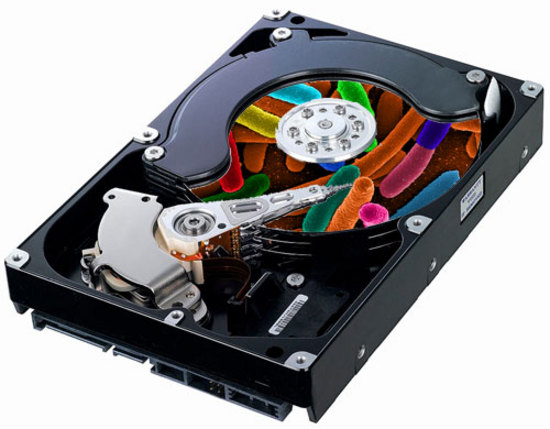.
Here’s a concept: what if your hard drive grew more capacity on its own? This discovery is all over the news – if you travel in the high profile, fast moving world of data storage 🙂
That is what scientists from the University of Leeds in the UK and the Tokyo University of Agriculture and Technology are working on. According to an ExtremeTech article, “researchers identified and extracted the protein responsible for converting iron into magnetite — Mms6.” Granted, the research has only proven to match the capacity Seagate’s recent demonstration of HAMR (Heat Assisted Magnetic Recording) of 1TB per square inch. But, as the ExtremeTech article points out…
“the real appeal here is that we might eventually be able to grow non-volatile storage, rather than manufacture it. Imagine if your computer had a hard drive that simply grew another platter when it approached capacity; imagine if repartitioning a hard drive actually split your hard drive platter into multiple fragments, which could then be re-grown to become complete platters.”
It’s safe to assume, the technology may not be cheap, but in terms of scaling to your storage needs, it seems much more appealing for a drive to simply expand on its own versus you having to upgrade your storage, or add more storage as your capacity needs grow. Of course, there are numerous variables at play here. The same variables that go into designing a hard drive whether its Perpendicular Magnetic Recording (PMR), Heat Assisted Magnetic Recording (HAMR), or this new concept of bacterial magnetic recording…I’ll call it BMR for consistency’s sake.
Reliability is the number one variable, and what goes into designing a single hard drive (and even moreso, different types of hard drives — desktop, laptop, enterprise, consumer electronics) is painstakingly technical. Hundreds of thousands of hours and tens of millions of dollars go into ensuring the product will operate at a wide range of temperatures, altitudes, humidity levels, and workloads, not to mention with thousands of different applications, in hundreds of different systems, and for hundreds of thousands of consecutive hours of operation.
Don’t get me wrong, I love the innovation and science that is being applied to making hard drives bigger, faster, more reliable, cost effective, and sustainable, and given the growth of data, there seems to be a lot of investment in the areas of science needed to advance drive technology. Here is what we have seen just in the past year:
- Bacterial magnetic recording
- HAMR
- Superman Crystals
- Molecule-sized magnets
Data growth is a powerful thing…it’s driving some of the world’s top research institutions to find new and better ways of storing information. And considering the amount of data we are generating, it’s a welcome sight. Let’s not get too excited though. Research and discovery is one thing, putting the technology into real world use is where the magic really happens.
Do you want bacteria growing in your PC?
Related Posts:
Paving the way for big hard drive capacity gains
Seagate clears the air on HAMR vs BPM
Storage capacity science…take it with a grain of salt
A 3000TB hard drive?…it comes all down to chemistry
HAMR follows PMR to keep disks driving









But the bacteria can still only grow a certain number of platters in a given volume of space, the chassis of the hard drive. And how will this data be accessed unless some sort of organic read/write mechanism is grown, instead of a traditional read/write servo arm with 2 heads on it..
To solve the volume of space problem, can the bacteria reorganize itself into a higher density form?
Yeah great concept but how in the world could it be helpful in spinning platter hard drives.
Just plow ahead with quantum computing
[…] Growing hard drive capacity is infectious […]
[…] Growing hard drive capacity is infectious […]
[…] Growing hard drive capacity is infectious […]